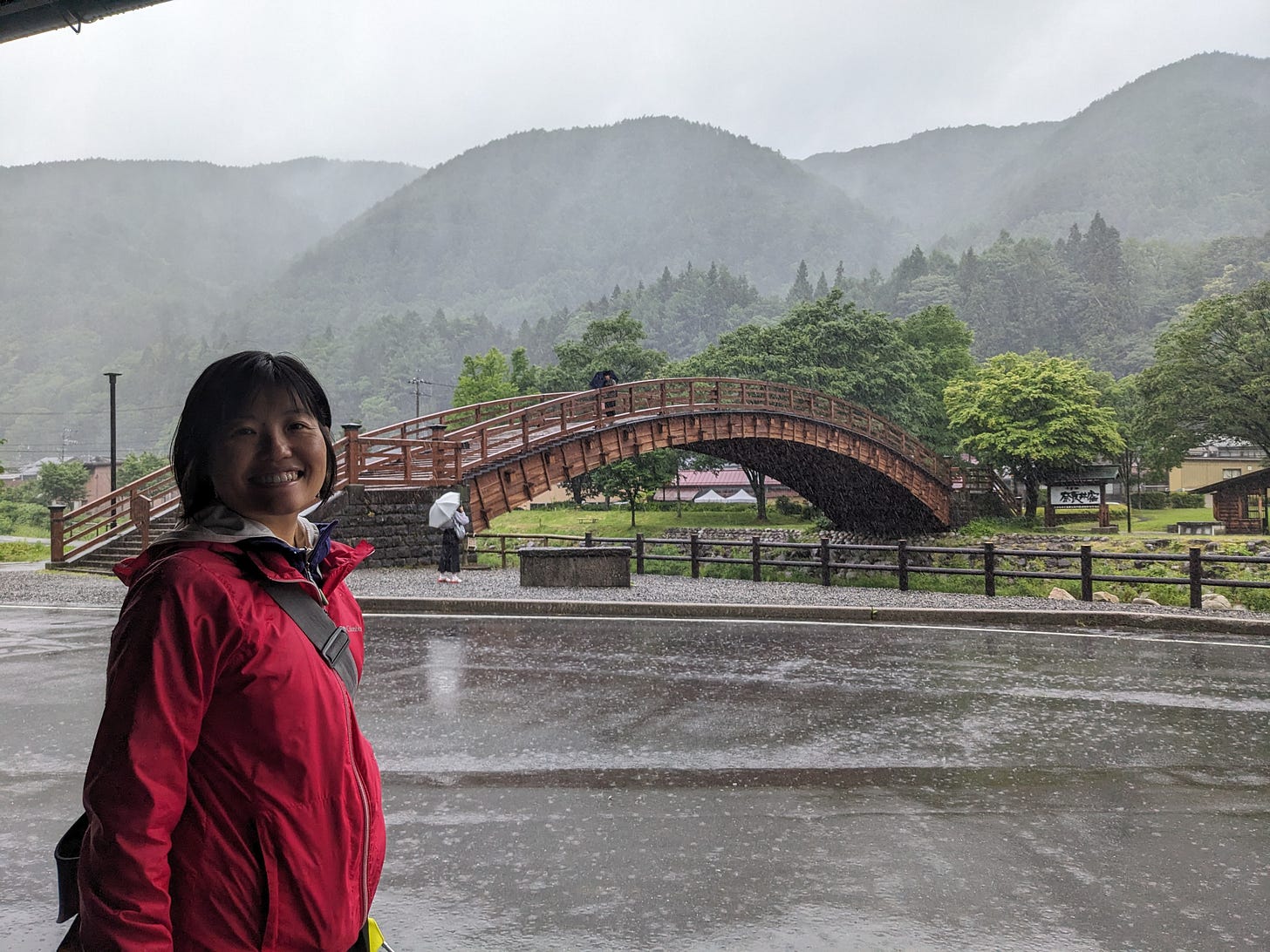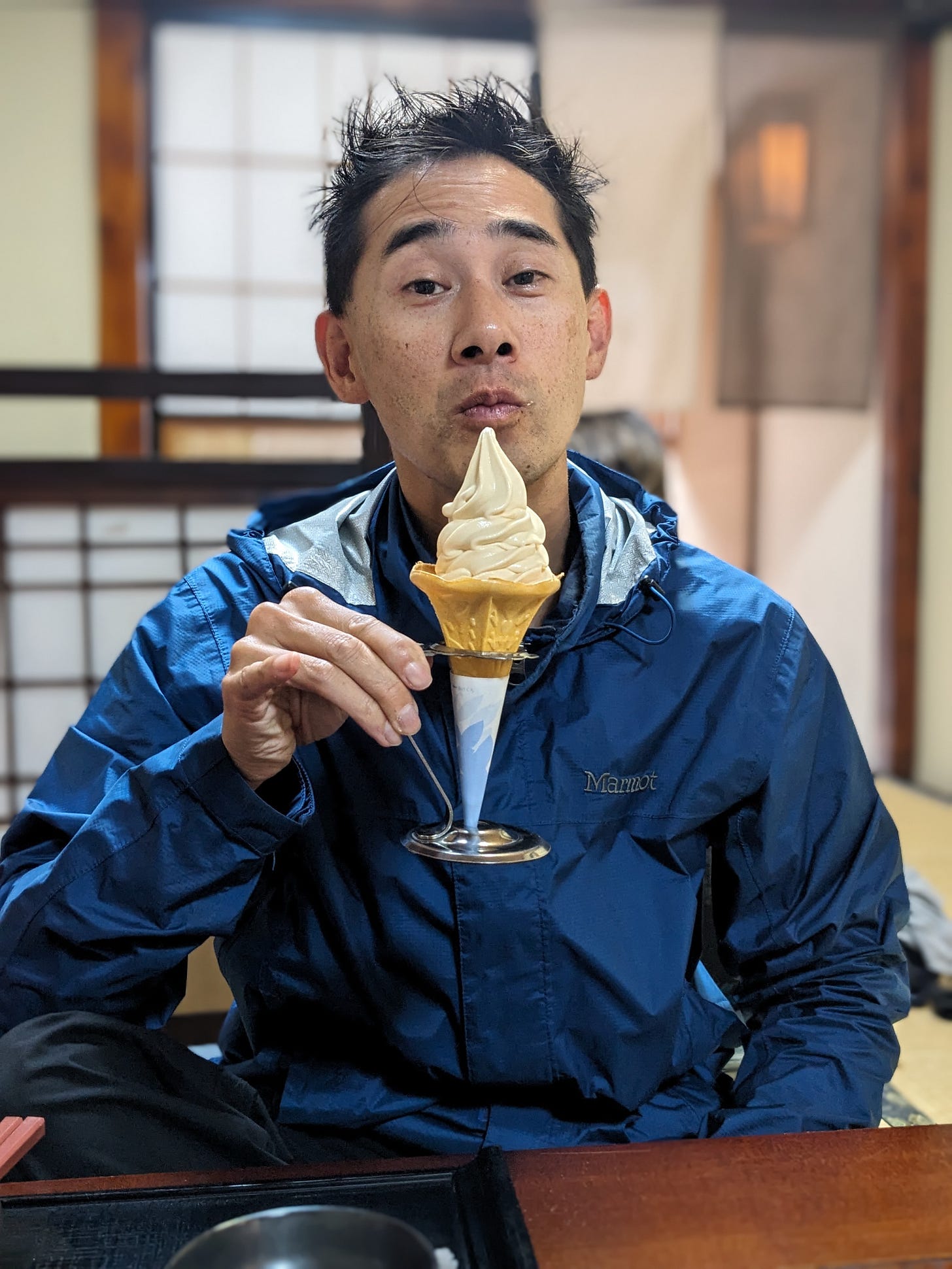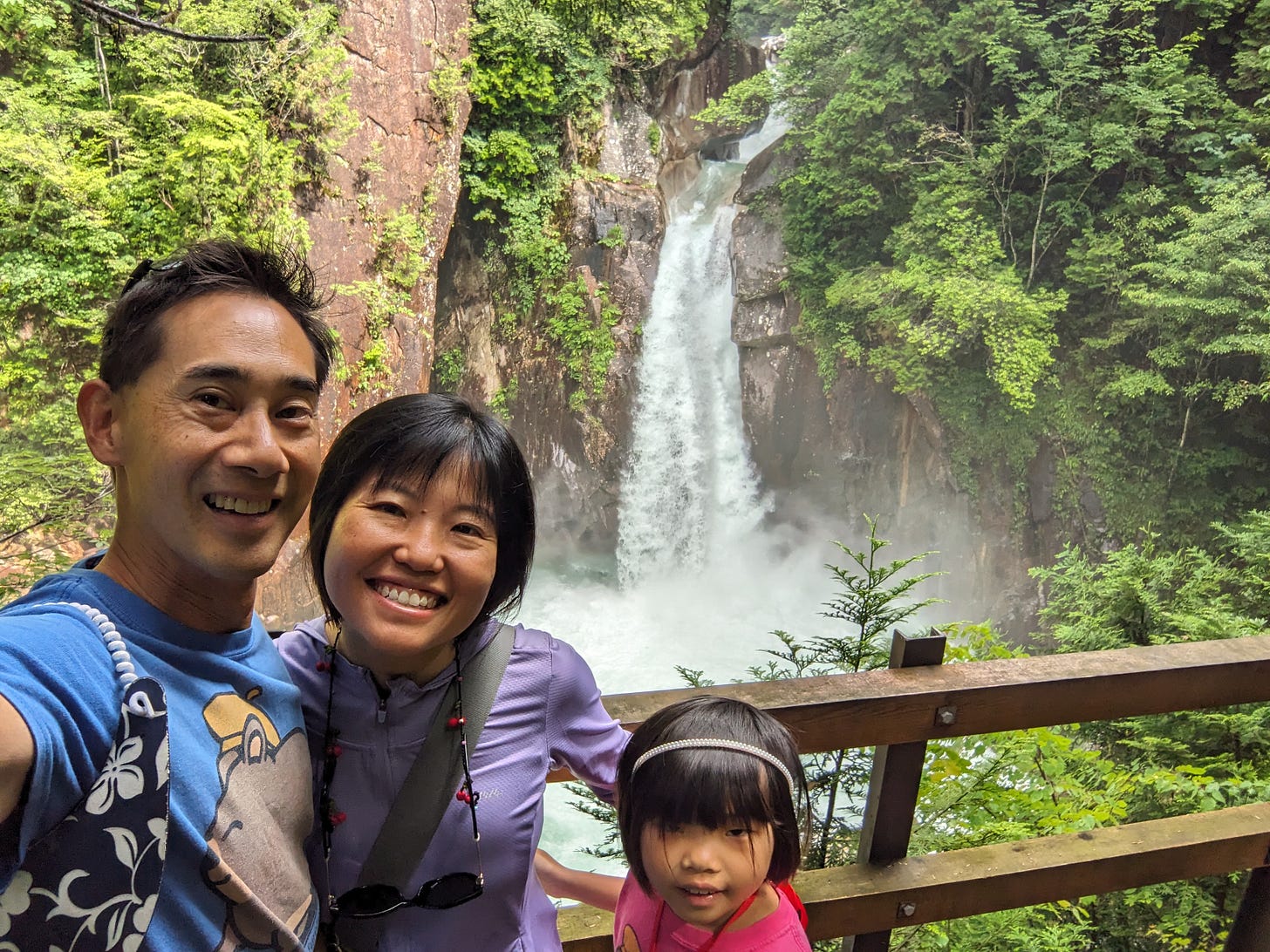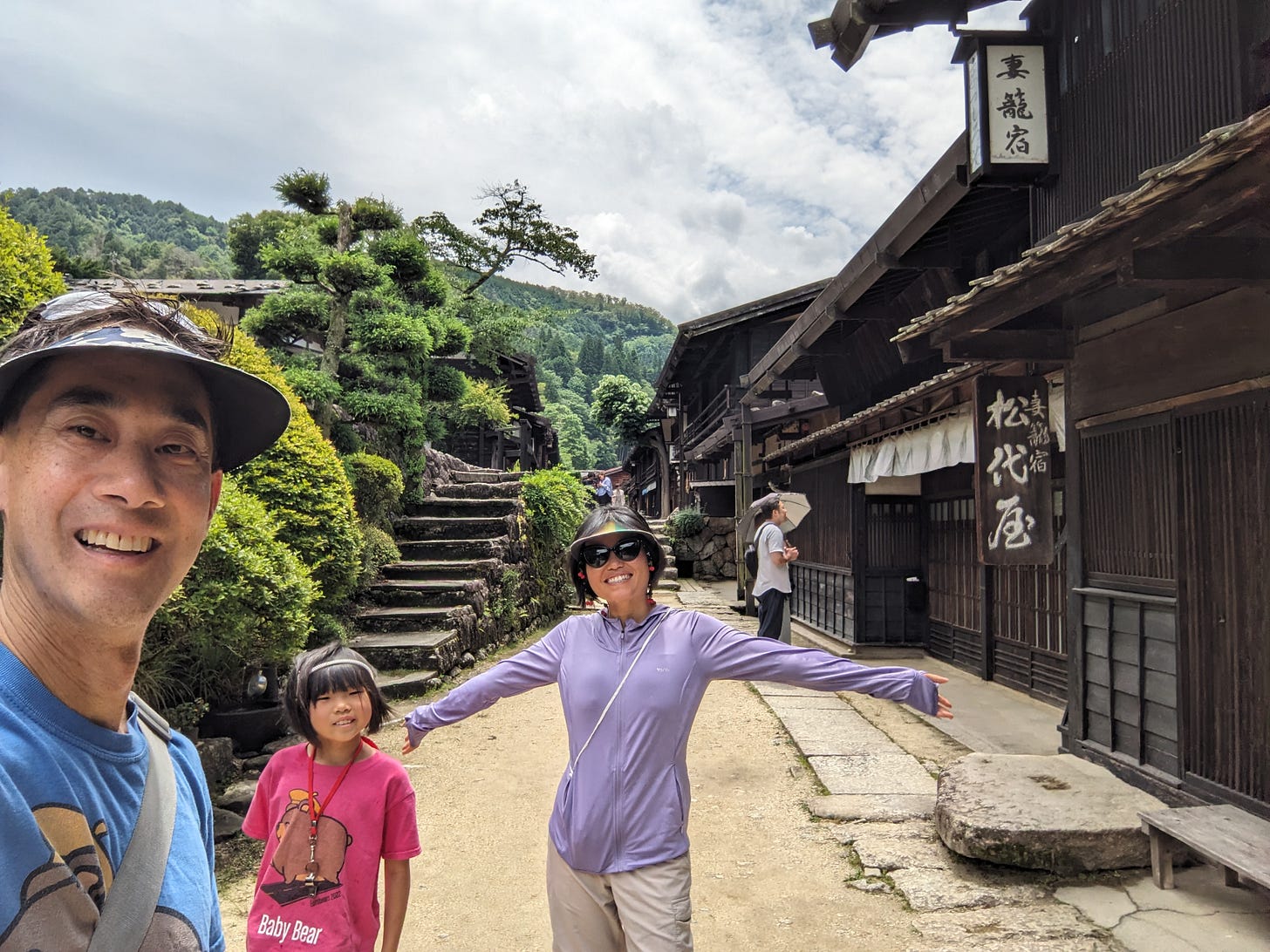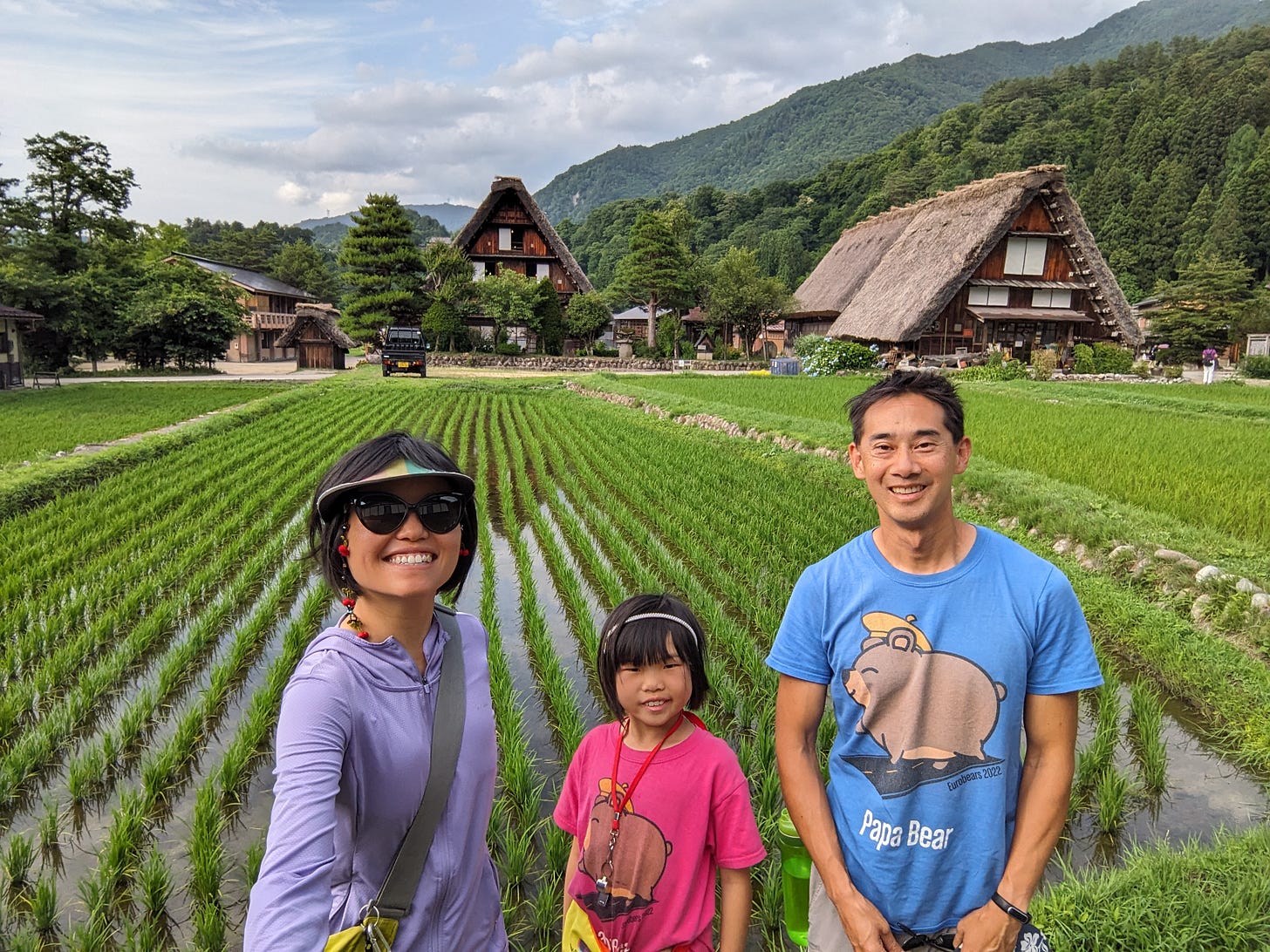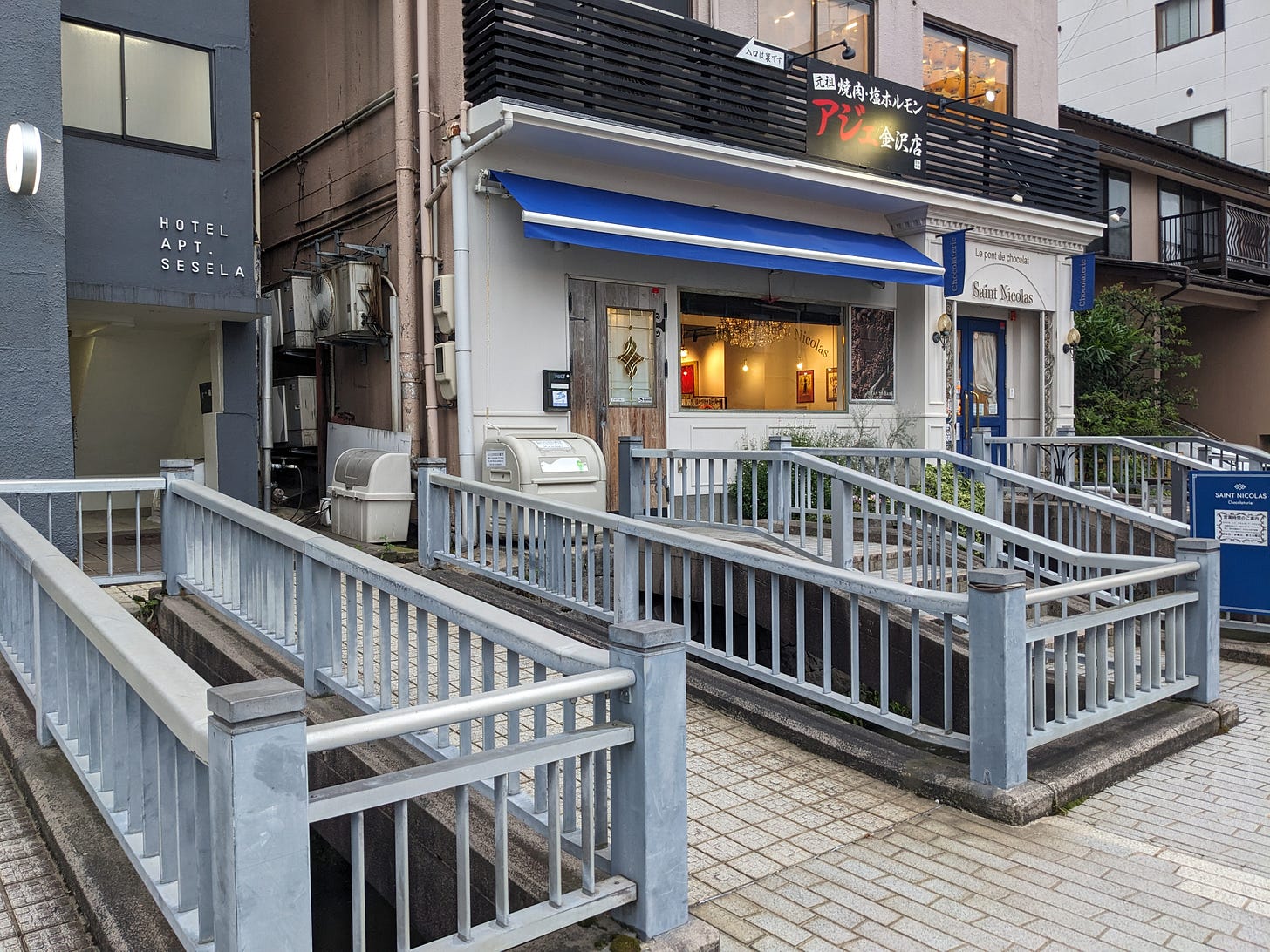And then the rain comes. It is not a gentle sprinkle or a perpetual mist. It is an outright downpour. We travel to the Kiso valley, a part of the original route through the mountains between Kyoto and Tokyo. Here they built a series of “post towns” along the route to give places of rest for the messengers who travelled by foot through the mountains. We stop at one of the most well-preserved towns, Narai
The streets lined with little wooden shops and restaurants look mostly deserted as the rain thunders down. Traditional shops have wooden slats for fronts rather than windows, so everything looks closed until you slide open the door and look inside. We find a shop to try gohemochi, a miso-soy grilled mochi stick which does not suit our tastes.
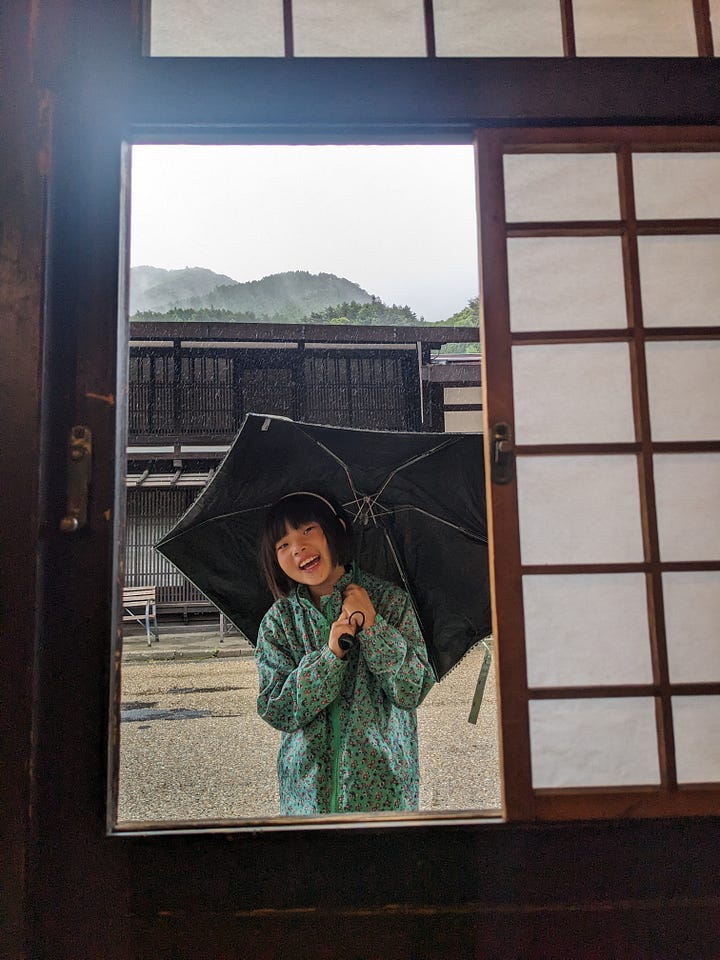
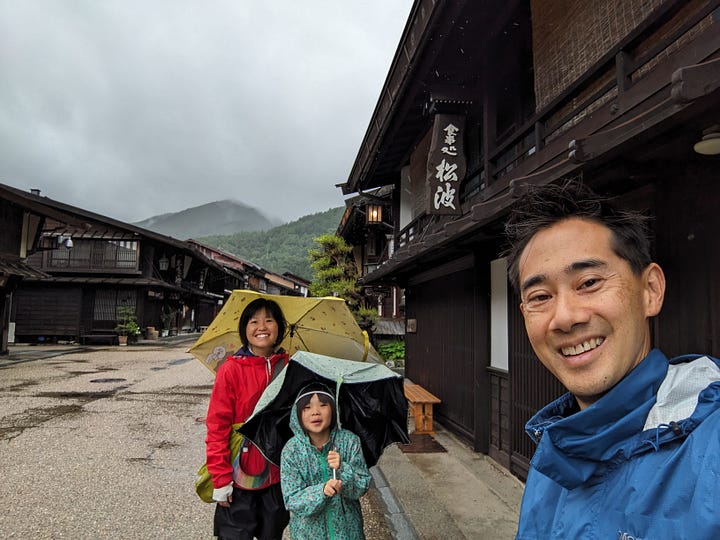
We eat lunch in a cute restaurant and try the local fried chicken (which is excellent) as well as the award winning vanilla soft serve (even better than the chicken) which has a rich caramel flavor. Soft serve seems to be the most consistent Japanese stable, perhaps sold in even more shops than rice. Some regions have rice, some regions have soba, but everywhere has soft serve.
Our destination is the famous Atera Valley where the water is reputed to be so clear that it shines blue in the sunlight, coining the term “Atera Blue”. We witness instead, a raging torrent of water blasting through the canyon. Water streams down makeshift waterfalls bursting from the rocks along the inside of the road, forming rivers that flow across our path and into the generous gutters and grates. This might be a crazy storm, but Japan is well-prepared for it.
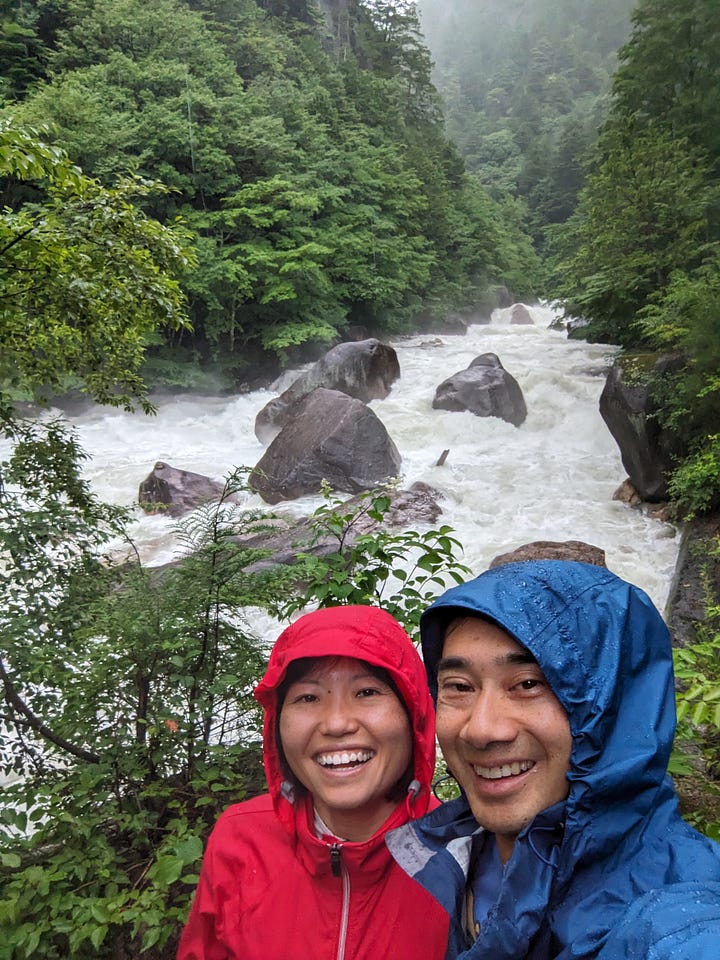
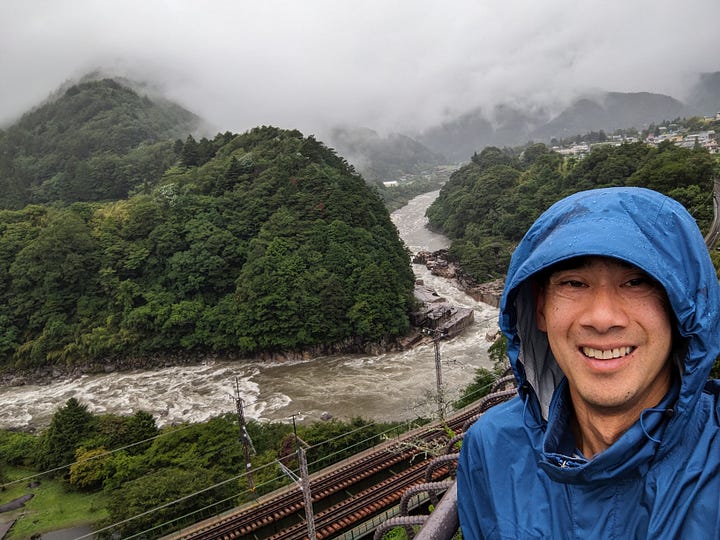
We have a lovely night at the Atera-so Forest Spa, a ryokan style spa with a super comfortable room and a lovely onsen. Here’s us testing the softness of the blankets:
In the morning, we meander downstairs in our Yukata to enjoy a traditional breakfast with lots of small pickle dishes, some salmon, soup and rice. We always love the kids breakfast better which comes with corn soup and meat!
After breakfast, the clouds part, and we step outside to a new world. We visit the Kakizore Ravine and take a 20 minute hike to the waterfall. It is one of the most amazing hikes I’ve ever done. The wooden walkway winds right next to and sometimes just barely above the rushing river. Every step I take, I feel the exhilaration of discovery and sheer awe at the beauty of this river and the rocky corridor it rushes through. At the end there is a steep climb to a viewing platform where we witness a grand waterfall plunging into the clear waters, creating a constant mist swirling in the air.
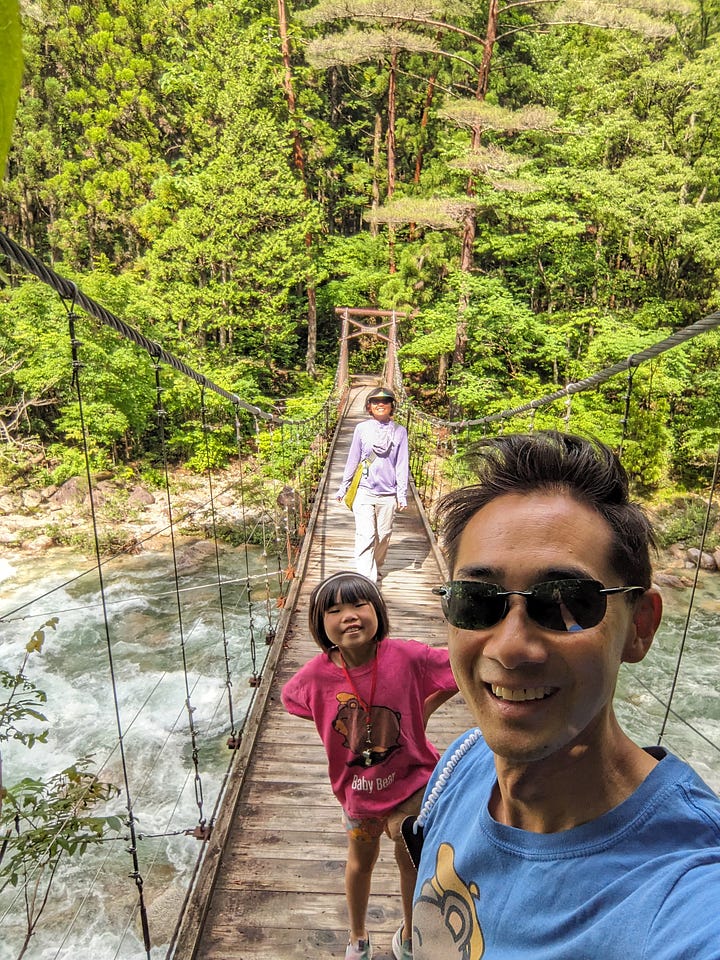
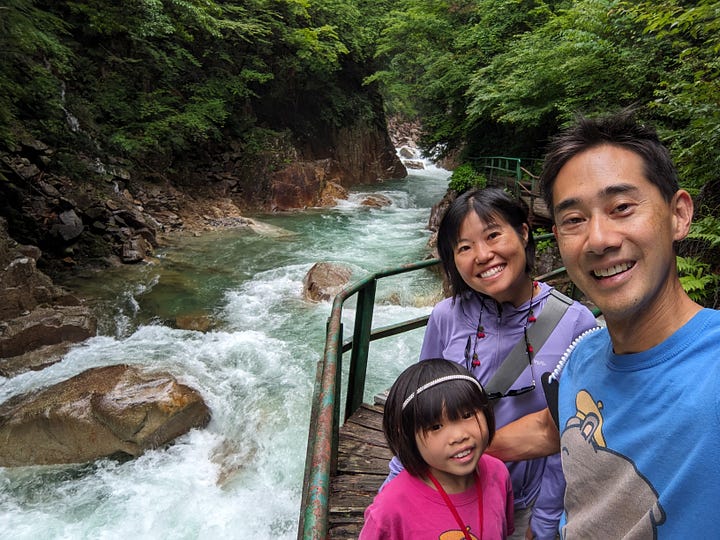
We head back to Atera valley. This time the waters are calm and blue. In less than 18 hours, the scene has transformed completely. We marvel at how the torrential waters and rain seem to have kicked up zero dirt, leaving the water clear enough to turn the river a glowing blue.
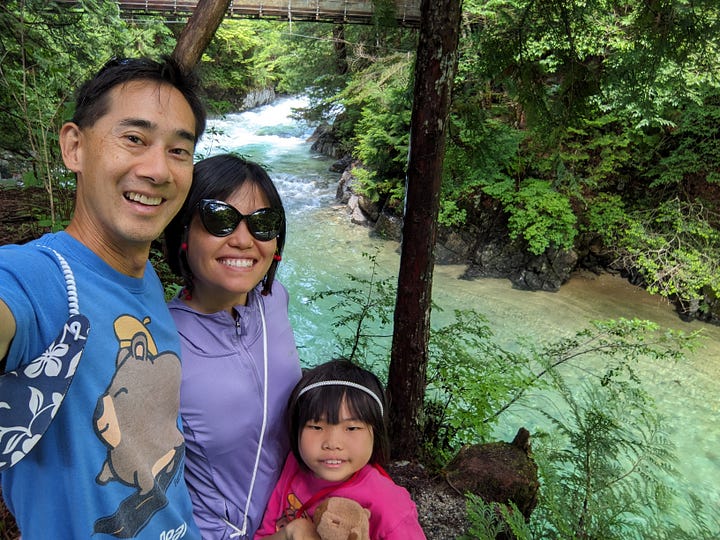
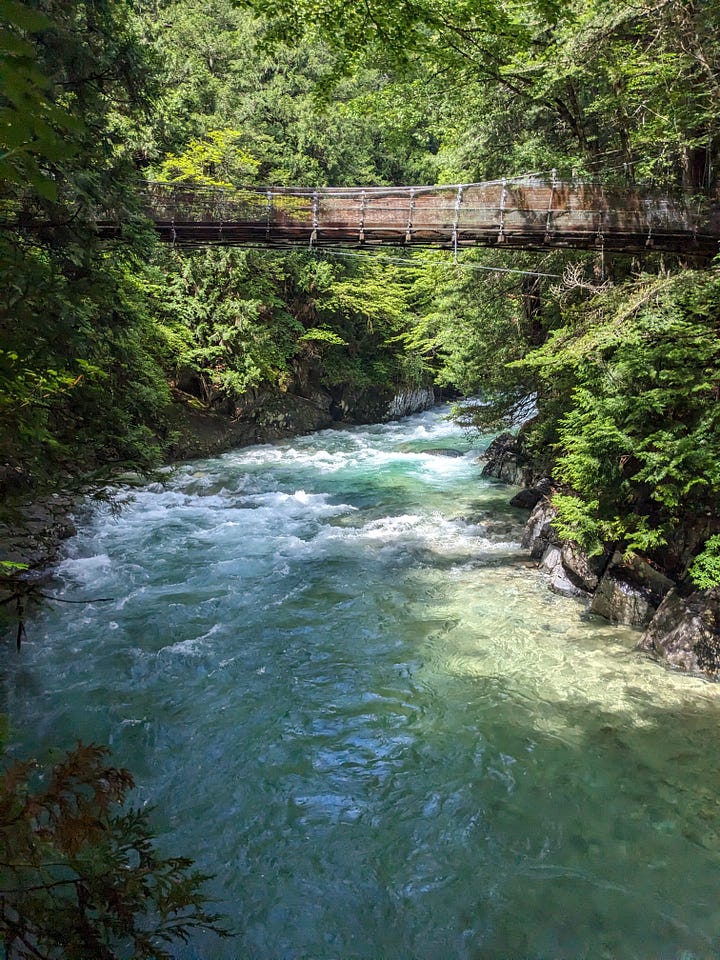
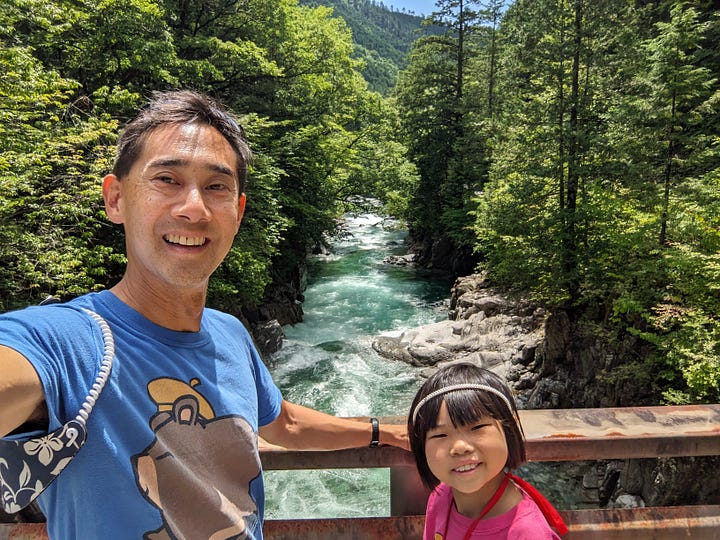
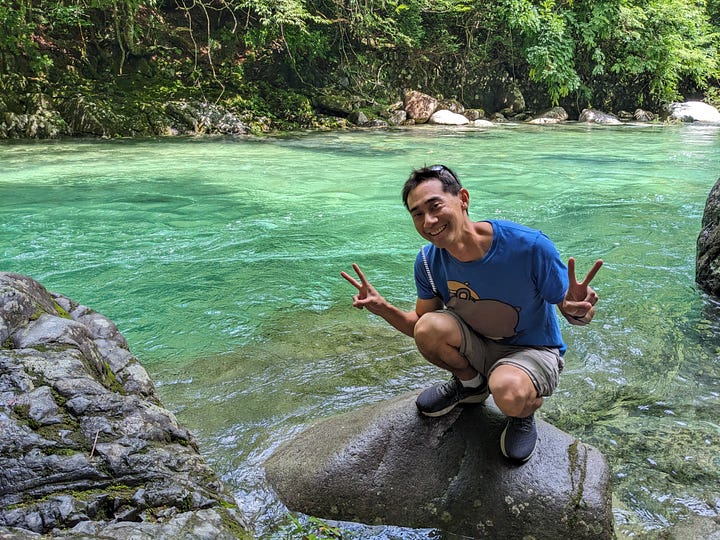
On the way out, we visit another cute post-village, Tsumago. This one seems even cuter than Narai, or perhaps it is because it is now sunny and the shops are open for business. After grabbing lunch, we hit the road again.
We make it to Shirikawa-go just before everything closes (everything closes in Japan before 5). This small hamlet is now a huge tourist destination, but it is preserved by putting the large parking lot across the river from the town. It’s famous for the thick straw rooftops most-often visited in the winter. It’s still amazingly cute in the summertime, with lush gardens and rice fields interspersed between the traditional huts.
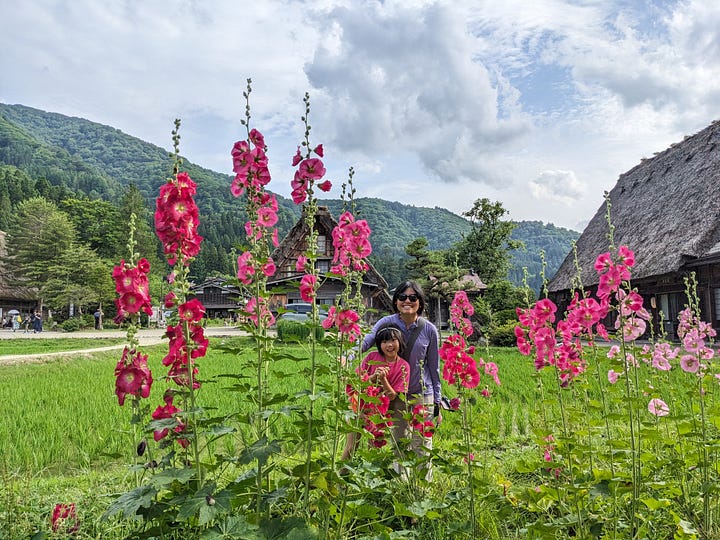

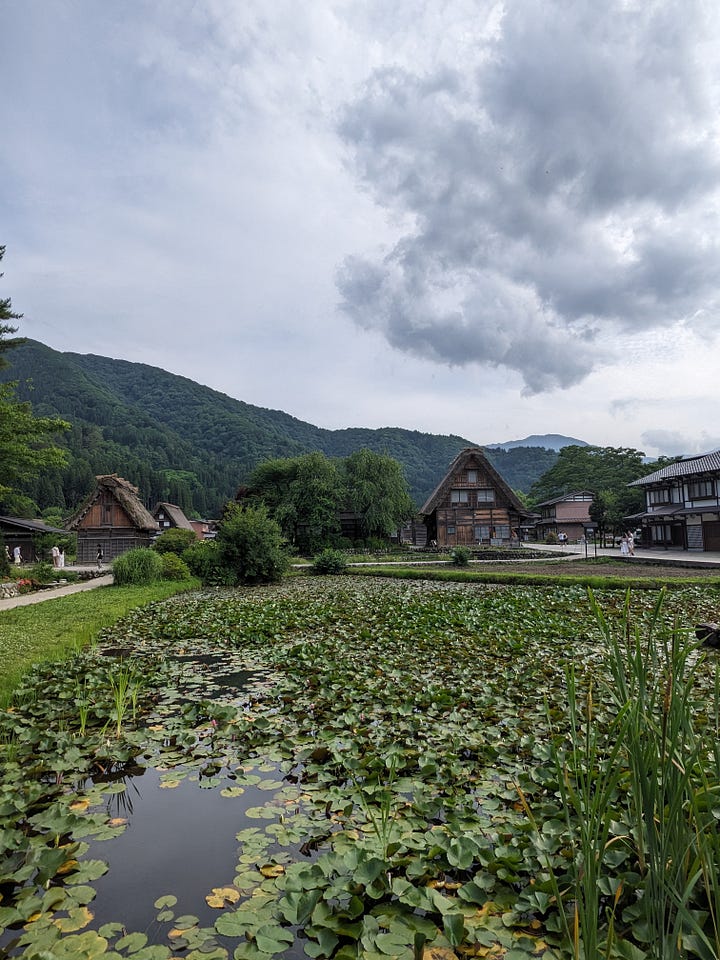
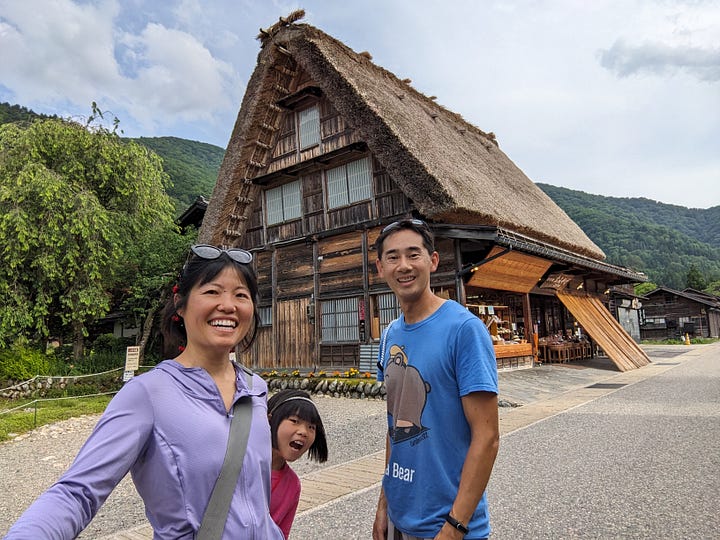
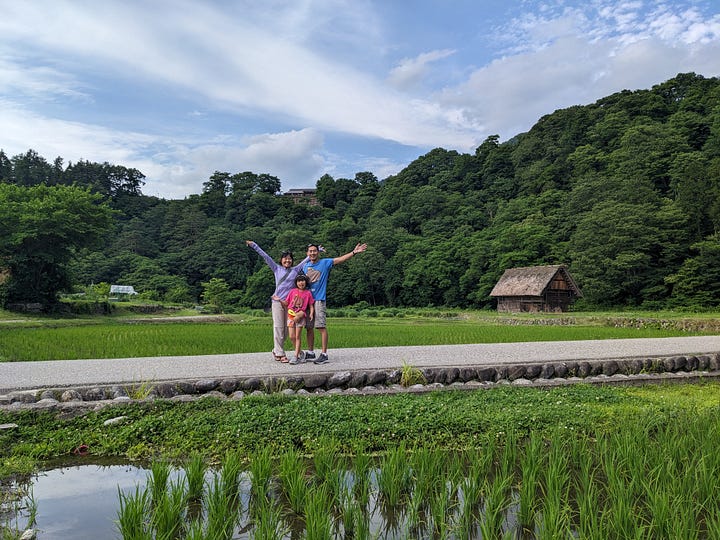
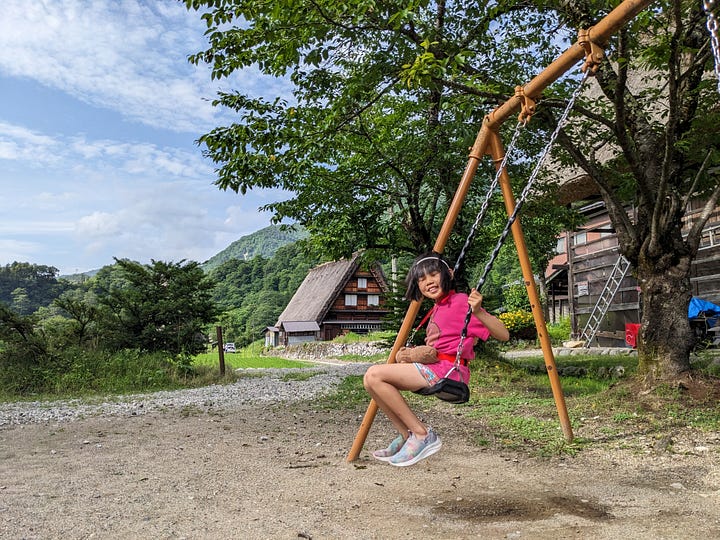
Finally, we arrive at our home for the next work week, an apartment in a super cute European-esque neighborhood along a small river in the city of Kanazawa. More to come!




